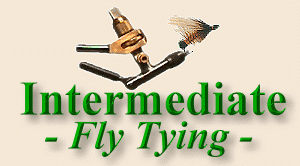Who doesn't know the value of crayfish when it comes to the subject of
fish food? I can't think of a gamefish species that won't eat a
crayfish if it can fit the crunchy little critter in its mouth. Trout,
pike, bass, walleyes and panfish all eat crayfish if the opportunity
arises.
I guess that's why crayfish patterns are common fare for bass fishing.
But, I don't understand why people don't use them more for panfish,
walleyes, trout and pike. The value of this creature has been revealed
to me many times in the last few decades, but it took a trip to Deerfield
Lake in the Black Hills of South Dakota nine years ago, to rivet the
versatility of the fly into my memory.
It was springtime and the ice was just starting to leave the lake. I
was casting a small wet fly onto the ice then dragging it off the edge
and letting it sink. I was picking up a few fish, but nothing really
big.
A few of the fish coughed up small crayfish while I was releasing them.
In fact, the biggest fish coughed up more than one, and some of the
crayfish they were coughing up were almost too big to fit in their mouth.
A little squeeze on the belly of the next couple of fish revealed they
were also full of crayfish.
I might not be the brightest guy in the world, but I'm smart enough to
take a hint when it's presented in such an obvious way. I switched to a
small sized version of my favorite crayfish pattern and started catching
more fish. I also started catching bigger fish.
Eventually I realized that a larger fly might catch larger fish so I
switched to a size 4 fly. The next trout I caught was over five pounds,
and it had visible lumps in its belly. The fishing continued fast and
fruitful with several more rainbows and one splake over five pounds. By
the time darkness and cold forced me to quit, I had caught and released
over 30 trout, and most of them had visible lumps in their obviously full
stomachs.
I've repeated that spring, ice-out trip many times since then. Most of
the time the fishing has been good, and a few times it was great; passing
up the action of that first trip. Every time, the best fly was that
crayfish pattern I developed in 1982 to fool the big browns of the
Missouri River in my native state of Montana.
Since I've lived all my life in areas that were rich in grouse and
pheasants, I use the feathers of these birds in many of my fly patterns.
If the original pattern calls for hen feathers, I'll often substitute
grouse or pheasant when I can. That's the case with this pattern too.
The claws, antennae, legs and front of the carapace (the hard shell over
the head of the crayfish) are all created with pheasant and sharptail
grouse feathers.
If you don't have access to grouse feathers but do have access to brown
hen feathers that are mottled with black, use those as a suitable
substitute. I'm certain the fish won't complain if you use something a
little different from what I use. After all, the only thing that really
matters is that the fish like it.
My crayfish pattern has evolved a little over the years. At first, I
used head cement to strengthen the back and tail and I didn't color
anything with markers. The head cement wasn't strong enough to be
durable so I switched to epoxy. Eventually I started adding color to the
back and tail to increase the visual attraction of the fly. After I
learned about Angler's Choice Soft Body resin, it didn't take me long to
start substituting it for the epoxy on my crayfish flies and most other
flies that use epoxy.
|














